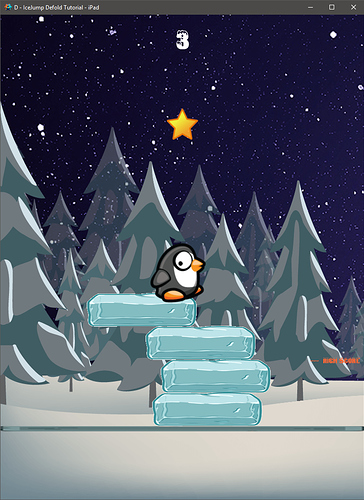Everyone seems to get a kick out of playing the Stack (and Stack Jump) type of game….I thought that genre might serve as an interesting context for the next tutorial in the series of Defold Tutorials I’m posting on the TactxStudios website. I have named the project IceJump! and the goal is to see how many ice blocks you can get a penguin to jump onto before it is knocked off the stack.
Additionally, to add some enhanced playability, the sequence of ice blocks comes from randomly selected sides of the game board, at randomly increased speeds as the ice stack grows higher. The use of a kinematic game object for the penguin is the key Defold feature being highlighted in this tutorial. This approach provides much greater control over customized game play than reliance on a standard physics model.
Key Defold Design Features.
My goal in this tutorial is to focus on how to best implement a game object which includes a kinematic collision object. Key new features within this IceJump! tutorial include:
-
Kinematic Game Object Creation in order to gain greater control over jumping, bouncing and stopping actions. The project resolves the multiple ‘contact_point_responses’ inherent in using kinematic collisions, implementing both bounce and jump effects integrated with sprite animation
-
An animated ScoreBoard Feature has been added which incorporates an animation where a star object is generated, fades into view and moves up the screen as the score is incremented for each successful ice block.
-
The game also includes many of the key features highlighted in previous tutorials on this website, to include: (a) animated SplashScreen logos, (b) a custom render script, © custom fonts, (d) use of the native Defold timer extension, and (e) onscreen debug messaging.
I hope you have a chance to take a look at this tutorial, as well as the others posted on this site.
All the best, Dave


